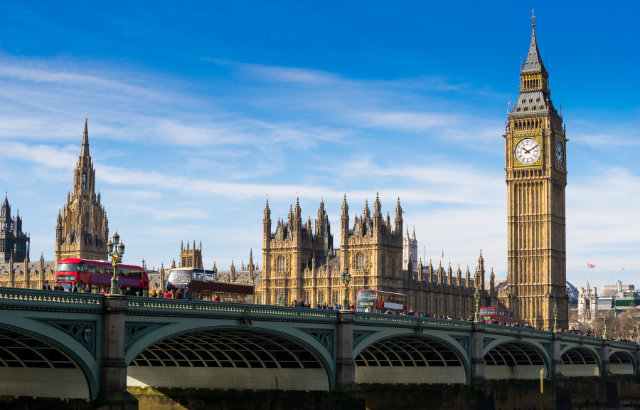Why some people switch political parties - new research
Professor Tim Bale, Professor of Politics at Queen Mary University of London explores party-switching politics – including how many people switch allegiances and why they do so.
.jpg)
Stock image of Labour party rosette. Credit: stocknshares/iStock.com
Why do some people switch political parties? After all, if someone is committed enough to a particular vision of politics, wouldn’t they be relatively immune to the charms of its competitors?
It turns out, however, that switching parties at grassroots membership level is by no means uncommon, even giving rise in some quarters to accusations of “entryism”.
The massive increase in Labour’s membership which accompanied Jeremy Corbyn’s elevation to the leadership in 2015 was often anecdotally associated, at least in the minds of his enemies (internal as well as external), with an influx of people who had previously belonged to parties on the far left fringe of the country’s politics.
Meanwhile, the Conservatives’ adoption of an ever harder position on Brexit was blamed by some not just on Theresa May’s desire to keep Tory Eurosceptics on board, but on pressure put on more moderate MPs by former members of the Eurosceptic UK Independence Party (UKIP) joining and even taking over their local associations.
Our new research sheds light on the truth of party-switching politics – how many people really switch, why people are motivated to do so, and whether the claims of entryism are credible.
Patterns of party-switching
We surveyed nearly 7,000 members of British political parties (including registered Brexit Party supporters) within two weeks of the 2019 general election. When we analysed the data, we found a remarkably high proportion of our sample (23%) claimed to have previously been – or, if we allow for registered Brexit Party supporters as well, currently were – members of a different political party than the one to which they were now affiliated.
Some 29% of Tory members who admitted in 2019 to having been members of other parties claim to have been UKIP members. Interestingly, though, virtually as many were former Labour members. As a proportion of all Conservative Party grassroots members, these figures amount to 3% who were former members of UKIP, 4.5% who were simultaneously Brexit Party supporters, and 4% who were ex-Labour members.
This puts into perspective the scale of the entryist phenomenon. At most, 7.5% of all Tory members in 2019 had a history of connections with UKIP or the Brexit Party (probably fewer, given the likely overlap of UKIP and Brexit Party connections).
This is not to say that their impact may not have been significant in certain constituencies when it came to selecting party candidates, nor is it to deny that the Conservative Party grassroots have increasingly come to favour “hard” forms of Brexit over the course of the past few years. But it would appear that, in the vast majority of cases, this will have been down to the changing views of members who had no formal associations with UKIP or the Brexit Party.
As for Labour’s members, two-fifths of those with previous party memberships joined the party after 2015 – surely the Corbyn effect? Those Labour members who had past lives in other organisations came mainly from the Greens or Liberal Democrats – or, intriguingly, from an amorphous “other parties” category, with the latter maybe hinting (but only hinting) at a degree (albeit limited) of entryism from the far left.
It is worth bearing in mind that the smaller parties have generally experienced even higher levels of cross-party flows, proportionately speaking. For instance, three-fifths of Green members were former Labour members, as were around half of SNP and Liberal Democrat members.
Why switch?
But what drives some people to quit one party and join another? Our research suggests that the most telling reasons are connected with ideology and party leaders. If people feel themselves to be in tune with particular a party in terms of its core values and leader, they are naturally attracted to join it. However, they are equally inclined to eventually quit the same party if they feel it or its leadership has changed tack and become more remote.
In particular, we discovered that ideological radicals are especially prone to switching parties. The same goes for Brexiteers -– although this is perhaps a time-sensitive finding relevant to the past few years, given the special power of Brexit to cut across longstanding patterns of partisan alignment.
Ultimately, the traditional breadth of the major parties in Britain partly reflects the nature of the first-past-the-post electoral system, which makes it hard for minor parties to gain parliamentary representation unless – like the Scottish and Welsh nationalists or, more unusually, the Greens in Brighton – they have geographical concentrations of support.
As a result, both Labour and the Conservatives are coalitions of quite diverse types of people. We should not be surprised, then, that their grassroots members often find themselves at odds with their parties’ policies – particularly when there is a change of direction brought about by a change of leadership.
A new leader intent on charting a different course from their predecessor – Keir Starmer and Boris Johnson are both obvious examples – can try to keep as many of their existing members on board as possible. But, ultimately, it may be better for all concerned – and a sign of healthy, pluralist democracy – if those who come to believe another party might represent a better fit for them depart so they can try it for size.
And nowadays, of course, with the emergence of parties that either weren’t around at all (such as populist radical right outfits like UKIP, the Brexit Party and Reform UK) or were less powerful than they are now (like the SNP), there are more alternatives on offer than ever.
This article was first published in The Conversation on 13th July.
Related items

10 December 2024

9 December 2024

6 December 2024